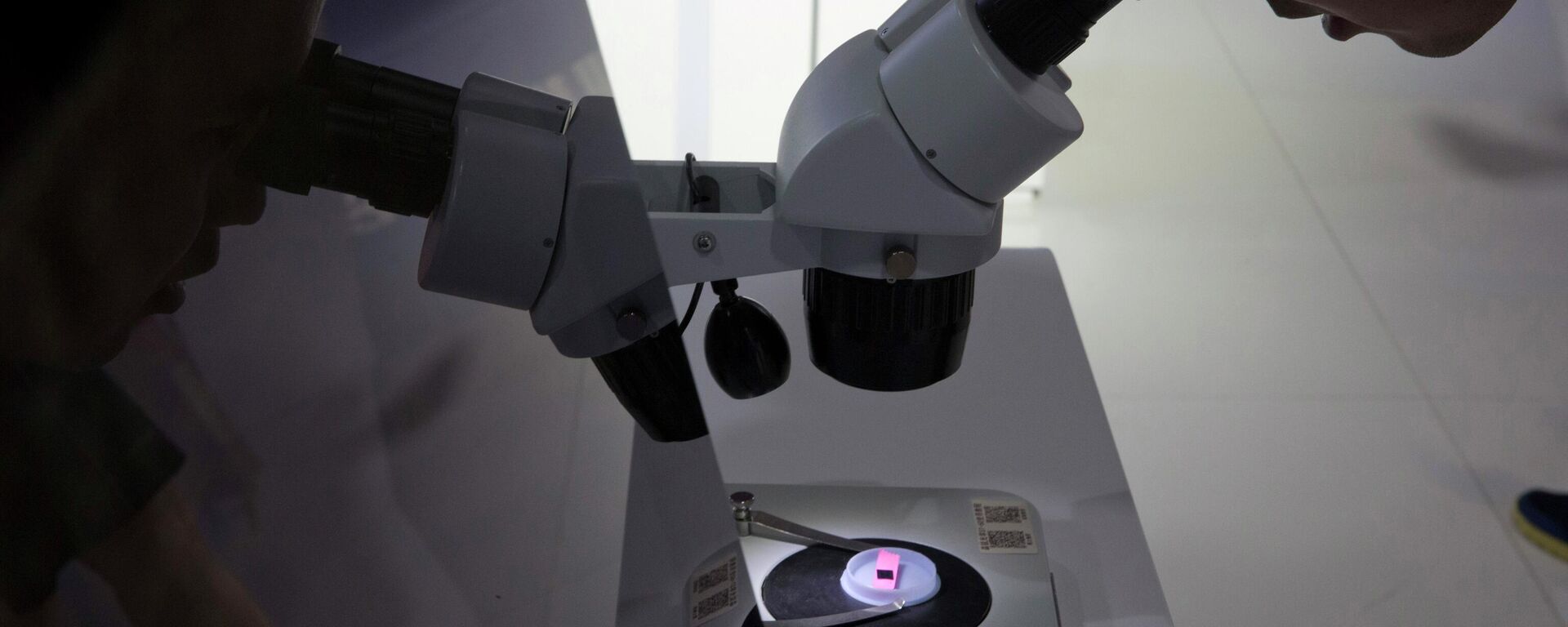https://sputnikglobe.com/20240224/china-making-ai-breakthroughs-despite-bidens-sanctions-1116956025.html
China Making AI Breakthroughs Despite Biden’s Sanctions
China Making AI Breakthroughs Despite Biden’s Sanctions
China could close the gap with the US in terms of artificial intelligence (AI) within one or two years, the Global Times writes, thanks to the People’s Republic’s breakthroughs in the field.
2024-02-24T18:50+0000
2024-02-24T18:50+0000
2024-02-24T18:50+0000
china
world
science & tech
joe biden
beijing
washington
elon musk
national committee of the chinese people’s political consultative conference
starlink
artificial intelligence
https://cdn1.img.sputnikglobe.com/img/07e7/05/08/1110205255_3:0:1454:816_1920x0_80_0_0_1fcf5a9f4972c2af13ac1979e47fbfd9.png
The AI gap between China and the US could soon be closed, a technology expert has said.Zhou Hongyi, founder and chairman of 360 Security Technology and a member of the National Committee of the Chinese People’s Political Consultative Conference, made the prediction to China’s daily English-language newspaper Global Times.The gap in AI largely lies in «determining the technical direction,» according to the businessman.Zhou argued that China would make further progress in the AI field this year. He said it would be the «year of application» for Chinese software algorithms, with a focus on large language models (LLMs) — a type of AI that can mimic human intelligence.The South China Morning Post (SCMP) recently reported that China has allegedly developed new military surveillance equipment to enhance the nation’s electronic warfare capabilities with the use of AI. The device reportedly provides wide bandwidth, real-time monitoring and analysis of the electromagnetic spectrum, picking up «everything from amateur radio broadcasts to Elon Musk’s Starlink satellites.»SCMP quoted Yang Kai, a professor from the School of Information and Electronics at the Beijing Institute of Technology, who claimed that his team used AI to analyse enormous blocks of data, helping the Chinese military improve its information-gathering abilities at a high speed and for relatively low cost.The US has introduced new measures over last two years aimed at stopping China from obtaining advanced US microchip, supercomputer and AI technologies.In October 2022, the Biden administration introduced tough restrictions on exporting semiconductors and chip-making equipment to China. The CHIPS Act, signed by President Joe Biden the same, provided additional funds to US chip-makers. On October 17, 2023, Washington announced additional limits on sales of advanced US semiconductors while on October 31, 2023, the US president issued an executive order on «Safe, Secure, and Trustworthy Artificial Intelligence». The order set regulations requiring leading AI developers to share with the US government information on their products and the risks that their systems could create if used by potential adversaries. But despite those sanctions, Chinese firms continue to make technological breakthroughs.
https://sputnikglobe.com/20240204/chinas-first-ai-commercial-satellite-in-the-world-what-do-we-know-about-it-1116583604.html
https://sputnikglobe.com/20231205/us-sommerce-shief-hypes-china-threat-illusion-assaulting-chip-firms-counterproductive-1115398907.html
https://sputnikglobe.com/20231202/us-makes-no-advanced-chips-on-its-soil-today—commerce-secretary-1115349442.html
china
beijing
washington
2024
News
en_EN
https://cdn1.img.sputnikglobe.com/img/07e7/05/08/1110205255_185:0:1273:816_1920x0_80_0_0_5b7bf59bbdec82c27453ab517bc43bf8.png
china artificial intelligence, china chip-makers, chips, semiconductions, china’s ai for military use, china will soon narrow gap with us in terms of ai, joe biden restrictions against china’s hi-tech sector, chips act
china artificial intelligence, china chip-makers, chips, semiconductions, china’s ai for military use, china will soon narrow gap with us in terms of ai, joe biden restrictions against china’s hi-tech sector, chips act
China could close the gap with the US in terms of artificial intelligence (AI) within one or two years, the Global Times writes, thanks to the People’s Republic’s breakthroughs in the field.
The AI gap between China and the US could soon be closed, a technology expert has said.
Zhou Hongyi, founder and chairman of 360 Security Technology and a member of the National Committee of the Chinese People’s Political Consultative Conference, made the prediction to China’s daily English-language newspaper Global Times.
The gap in AI largely lies in «determining the technical direction,» according to the businessman.
«Once the direction is determined, Chinese companies’ learning capabilities are very fast. Especially when peers release open-source projects or publish papers publicly, it is not a difficult problem for Chinese teams to follow up,» Zhou said.
Zhou argued that China would make further progress in the AI field this year. He said it would be the «year of application» for Chinese software algorithms, with a focus on large language models (LLMs) — a type of AI that can mimic human intelligence.
The South China Morning Post (SCMP) recently reported that China has allegedly developed new military surveillance equipment to enhance the nation’s electronic warfare capabilities with the use of AI. The device reportedly provides wide bandwidth, real-time monitoring and analysis of the electromagnetic spectrum, picking up «everything from amateur radio broadcasts to Elon Musk’s Starlink satellites.»
The new system would allow the Chinese military to intercept enemy signals at unprecedented speeds, decode their physical parameters and effectively suppress them. Previously, this was nearly impossible during a combat engagement due to the very large amount of data to be processed.
SCMP quoted Yang Kai, a professor from the School of Information and Electronics at the Beijing Institute of Technology, who claimed that his team used AI to analyse enormous blocks of data, helping the Chinese military improve its information-gathering abilities at a high speed and for relatively low cost.




